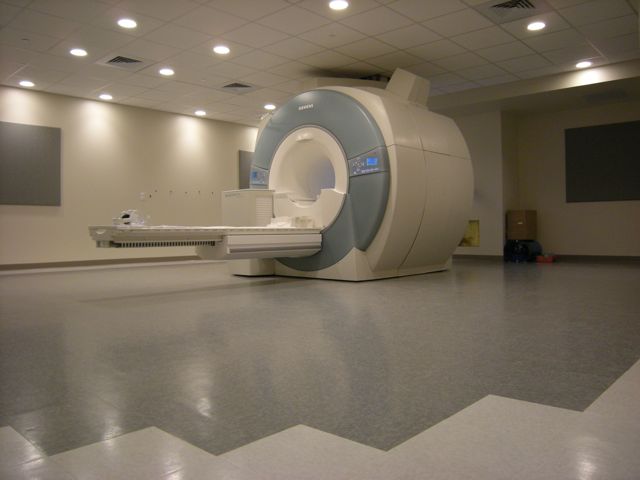About the topic
Bio
Get the Flyer (pdf)
About the topic
 The mission of our lab is to investigate the brain pathways that underlie the generation and regulation of pain and emotion. One line of work concerns how cognitive and motivational factors influence the way in which painful stimuli and other aversive events are processed in the brain and body. Two related lines of work involve developing biomarkers for pain and emotion, and studying the roles of conceptual knowledge and learning in pain perception and avoidance behavior. A fourth line of work investigates the cortical-subcortical circuits involved in social evaluative threat. Recent and ongoing studies combine measurements of emotional behavior and self-report, brain activity (measured with fMRI, or, less frequently PET or EEG), and peripheral physiology, including measures of autonomic and endocrine activity. Our lab has a particular emphasis on developing and using new analysis methods to gain a clearer picture systems-level interactions among brain regions. We are also engaged in collaborative, translational research incorporative brain systems-level analysis into the study of clinical disorders, including PTSD, depression, schizophrenia, and borderline personality disorder.
The mission of our lab is to investigate the brain pathways that underlie the generation and regulation of pain and emotion. One line of work concerns how cognitive and motivational factors influence the way in which painful stimuli and other aversive events are processed in the brain and body. Two related lines of work involve developing biomarkers for pain and emotion, and studying the roles of conceptual knowledge and learning in pain perception and avoidance behavior. A fourth line of work investigates the cortical-subcortical circuits involved in social evaluative threat. Recent and ongoing studies combine measurements of emotional behavior and self-report, brain activity (measured with fMRI, or, less frequently PET or EEG), and peripheral physiology, including measures of autonomic and endocrine activity. Our lab has a particular emphasis on developing and using new analysis methods to gain a clearer picture systems-level interactions among brain regions. We are also engaged in collaborative, translational research incorporative brain systems-level analysis into the study of clinical disorders, including PTSD, depression, schizophrenia, and borderline personality disorder.
How do researchers figure out what goes on in the brain of a conscious human subject? The breakthrough technology is functional magnetic resonance imaging, fMRI. (The picture is of the brand new fMRI unit at CU Boulder.) In this sort of study, the subject's head is positioned in an fMRI scanner. A large short-lasting magnetic field is turned on; the nuclei of molecules shift in response, like tiny magnets would do. As soon as the field is off, the molecules relax; but the rate for oxygen-containing and oxygen-depleted hemoglobin is different and the difference is detectable. As they relax a signal is detectable from their reorientation; the scanner can pinpoint their position very accurately, and after taking many images at different levels of the brain, can draw a map basically of the blood flow in the brain. If a region is active, its bloodflow increases, and the signal is greater there than when the region is not processing information. Comparing the two scans indicates the regions of the brain that are involved in whatever task is part of the experiment.
In a landmark paper of which Tor was first author, it was found: "The experience of pain arises from both physiological and psychological factors, including one's beliefs and expectations. Thus, placebo treatments that have no intrinsic pharmacological effects may produce analgesia by altering expectations. However, controversy exists regarding whether placebos alter sensory pain transmission, pain affect, or simply produce compliance with the suggestions of investigators. In two functional magnetic resonance imaging (fMRI) experiments, we found that placebo analgesia was related to decreased brain activity in pain-sensitive brain regions, including the thalamus, insula, and anterior cingulate cortex, and was associated with increased activity during anticipation of pain in the prefrontal cortex, providing evidence that placebos alter the experience of pain."
The New York Times has published an interesting article about Tor's work.
Bio
 Tor Wager is the director of the Cognitive and Affective Neuroscience laboratory at the University of Colorado, Boulder. He received his Ph.D. from the University of Michigan in cognitive psychology, with a focus in cognitive neuroscience, in 2003. He joined the faculty of Columbia University as an Assistant Professor of Psychology in 2004, and was appointed Associate Professor in 2009.
Tor Wager is the director of the Cognitive and Affective Neuroscience laboratory at the University of Colorado, Boulder. He received his Ph.D. from the University of Michigan in cognitive psychology, with a focus in cognitive neuroscience, in 2003. He joined the faculty of Columbia University as an Assistant Professor of Psychology in 2004, and was appointed Associate Professor in 2009.
In 2010, he joined the faculty of the Department of Psychology and Neuroscience at the University of Colorado, Boulder. His research focuses on how expectations shape responses to pain and emotional cues in the brain and body. Peer-reviewed publications include work on brain mechanisms of placebo analgesia and the cognitive regulation of emotion and attention.
Photo credit: Stephen Collector for The New York Times
